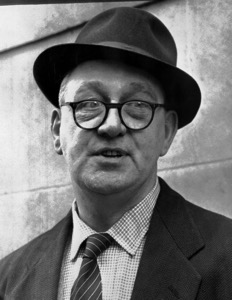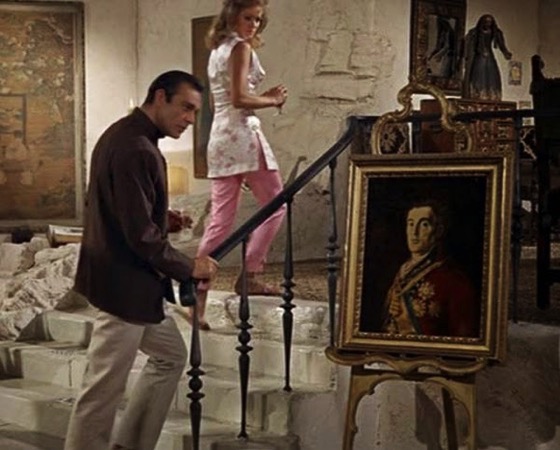Pre-Order Now – Available April 12, 2016
(A ebook review copy was provided to me by the publisher. All opinions are mine.)
How, in 1961, did an unimposing, middle-aged man from Newcastle commit a crime that no one has accomplished before or since — stealing a painting from London’s National Gallery? How then did this man, with the somewhat Dickensian name of Kempton Bunton, hold the painting — Goya’s Portrait of the Duke of Wellington — for ransom for 4 years, only to return it — unpaid — and turn himself in to the authorities? How could this story — which dominated the headlines for years — be lost to history until new information — and an unpublished memoir by the thief himself — arose in 2011?

Kempton Bunton in 1965
How big was this crime at the time? Even the early James Bond film, Dr. No, paid homage to the story’s power. While only 1 person supposedly knew the location of the painting for 4 years, the writer’s and set designers of the film placed the missing painting on display in Dr. No’s villainous hideout — drawing a nice double-take from Bond as he walks by. The story was so well known at the time that it was expected that viewers would easily get the reference.

James Bond discovers the missing portrait in Dr. No’s lair
With all these questions, and my general love of mystery stories, I avidly dove into The Duke of Wellington, Kidnapped and completed the book in just a week or so. Kempton Bunton seems like something out of fiction — a 1960’s version of Don Quixote. Ostensibly he took the painting in order to further his campaign for television licenses for pensioners. After the British Government paid 140,000 pounds to retain the painting after an American collector had purchased it, he saw it as a target apt to catch the eyes and ears of public, as well as something valuable enough to ransom with promises of free TV licenses for all the old people in Britain.
Really? Was this really the reason for the theft and the 4 years of running ransom demands? As with many fictional stories, you always need to think deeply about how reliable your narrator might be. Many things don’t add up in this story, but it would take decades for the truth to be fully known.
By Francisco Goya – National Gallery, Public Domain, https://commons.wikimedia.org/w/index.php?curid=12084920
Alan Hirsch has done an admirable job with this tale, using tons of contemporary news accounts, reports and other documentation from those directly involved in the search for the painting, including museum staff, Metropolitan Police reports and an unpublished memoir, written in the 1970’s by Kempton Bunton, yet only unearthed in 2011, nearly 50 years since the crime occurred. He takes us through Kempton’s version of the tale and tries to square it to what was known by police and other authorities at the time. Step-by-step we follow the painting to its hiding place, read the ransom letters sent over those 4 years and witness the sad, ludicrous and ultimately futile end of the caper with the return of the painting and Bunton’s self-submission and confession to authorities.
Hirsch details the court case against Bunton as it plods through the courts, including accounts from the defense lawyers and their troubling thoughts of how they were going to defend a man who willingly admitted to taking the painting and writing the ransom notes. A quirk in British Common Law gave them a loophole to play with, but would it be enough? Unfortunately, the book loses a bit of its forward momentum during these courtroom chapters. With countless quotes from court transcripts and the pondering over the legal loophole, the reader might feel a bit like the jurors themselves — overwhelmed, tired and a bit bored with all the legal wrangling.
Still, continue on brave reader and you will be rewarded with a twist, a turn and perhaps, the true story of The Duke of Wellington, Kidnapped finally revealed. There is more to this story than meets the eye and threads, once pulled, might never be stitched back together again. Just what did happen on that night in 1961? How did it happen and who knows the whole truth of the story?
If you like a bit of mystery, a bit of true crime and, sometimes, a bit of farce that seems to odd to be true, you’ll enjoy this romp through one of the biggest UK crimes of the 1960’s.
Recommended





